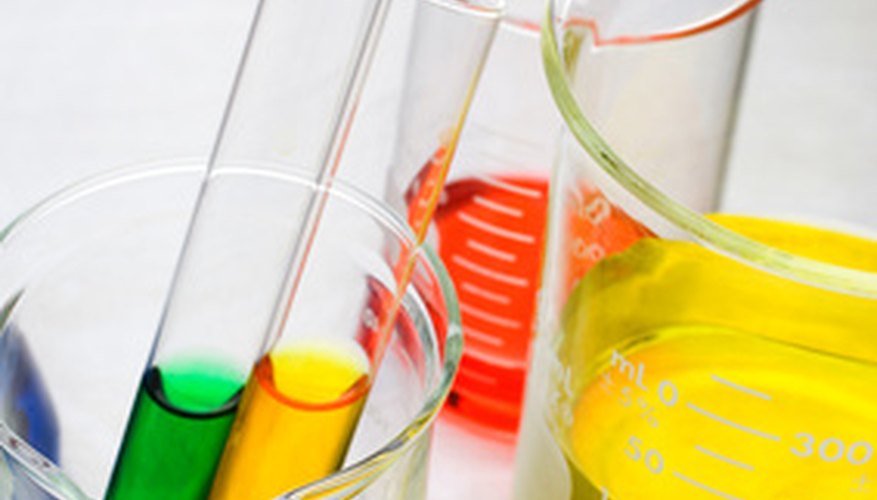Acids and bases have use in more places than just a scientific laboratory. Acids and bases come into play in every day life in everything from digestion of the foods you eat to the medicine you take and even cleaning products you use. Without acids and bases, many of the products you use today would not have much use.
pH Scale
A pH scale ranges from one to 14 and displays the range of acids and bases from top to bottom. Acids (low pH) range from one to six on the scale, while bases (high pH) range from eight to 14 on the scale. A pH of seven is considered neutral, like pure water.
- A pH scale ranges from one to 14 and displays the range of acids and bases from top to bottom.
pH stands for "potential for hydrogen ion concentration" and refers to the amount of hydrogen ions in a solution. The more hydrogen ions, the lower the pH. The fewer hydrogen ions present, the higher the pH.
Toothpaste
If you brush your teeth every morning when you wake up, you already have experienced your first base of the day. Toothpaste, which contains sodium fluoride, belongs to the group of weak bases. The high pH of the toothpaste helps to kill any bacteria that reside in your mouth at the time of brushing. Those bacteria prefer a neutral to slightly acidic environment, exactly the conditions of your unbrushed mouth.
- If you brush your teeth every morning when you wake up, you already have experienced your first base of the day.
- The high pH of the toothpaste helps to kill any bacteria that reside in your mouth at the time of brushing.
Food
The everyday foods that you eat also have characteristic acid or base properties to them. Let's say you want to have a nice tall glass of orange juice for breakfast, after brushing your teeth. Orange juice as a drink, and even oranges themselves, register as quite acidic. High citric acid content gives the oranges a low pH.
Later in the day for lunch, you decide to indulge in a steak and some potatoes. This lunch would have mostly basic properties.
- The everyday foods that you eat also have characteristic acid or base properties to them.
- High citric acid content gives the oranges a low pH.
- Later in the day for lunch, you decide to indulge in a steak and some potatoes.
Antacid
Uh oh! All that food has come back to haunt you. In your stomach, your body produces gastric acid---an extremely acidic (pH 1-2) material that helps to break down the steak and potatoes you have just eaten. The acid turns on enzymes that break down the proteins in the food. The highly acidic environment also helps to control potentially harmful microorganisms from getting to your intestine, where they can cause serious illness.
When you have produced too much of this acid, a common condition called "acid reflux" or "heartburn" can occur. This condition occurs when the acid starts to creep up your oesophagus from overproduction. Antacids, a basic formula, neutralises this acid to provide you with relief from the burning feeling.
- All that food has come back to haunt you.
- Antacids, a basic formula, neutralises this acid to provide you with relief from the burning feeling.
Cleaning
Some of the most common cleaning products have basic or acidic properties to them, that enhance the cleaning power. For example, when drains get clogged, the basic properties of some chemicals allow the product to "eat through" the clog and clear the drain.
